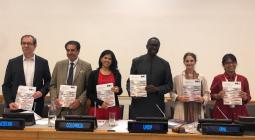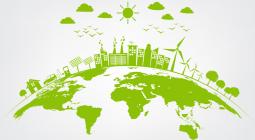UNECE Shares Energy-Efficiency Best Practices throughout Europe.

STORY HIGHLIGHTS
-To help countries deliver on climate and environmental targets related to buildings, the report shares best practices on adopting, implementing, and enforcing energy efficiency standards and technologies for buildings.
-The report presents priority actions to strengthen governments’ efforts to improve energy efficiency in the building sector.
-Selected actions include establishing or strengthening electric monitoring systems for compliance, enforcement, and quality control processes to ensure compliance with international building codes and standards; and creating incentives for improving energy efficiency through appropriate taxes, incentives and policies.
The UN Economic Commission for Europe (UNECE) has released guidelines on energy efficiency that present existing standards, technologies, and practices in 56 member States. The guidelines emphasize that the uptake of energy efficiency in buildings represents a key opportunity to make progress on a range of SDGs, particularly Goals 7 (affordable and clean energy), 11 (sustainable cities and communities), 12 (responsible consumption and production), and 13 (climate action).
The UNECE publication titled, ‘Promoting Energy Efficiency Standards and Technologies to Enhance Energy Efficiency in Buildings,’ points to a number of factors that limit the region’s assessment of energy performance gaps, such as incomplete statistics and lack of studies, and limited knowledge. Although many UNECE countries have technical requirements in place related to building energy codes, others have not yet implemented requirements on cooling, heating, lighting, or ventilation. A lack of training and monitoring and enforcement mechanisms also hinders progress towards energy efficiency in buildings.
"Croatia is using material from recycled construction and demolition waste and sustainably produced mineral wood to promote energy efficiency."
To help countries deliver on climate and environmental targets related to buildings, the report shares best practices on adopting, implementing, and enforcing energy-efficiency standards and technologies for buildings. The authors present best practices related to legislative and regulatory frameworks, management of multi-family housing stock, awareness-raising and behavior change, and technical and financial measures.
On legislative and regulatory frameworks, the report identifies better cooperation between governments, industry, and energy programme administration as critical. Smart data collection and audits to ensure proper building maintenance and operation can play a key role in managing multi-family housing stock. Case studies share targets and results from countries and cities that have managed such housing stock: the city of Innsbruck, Austria, for example, is retrofitting public buildings to improve indoor air quality and energy performance, including by using smart management systems to combine demand-side and supply-side measures.
Technical best practices include insulation and glazing, space heating, and innovative energy efficiency solutions and approaches, ranging from metering devices to sensors. Croatia is using ECO-SANDWICH® material, which utilizes recycled construction and demolition waste and sustainably produced mineral wood, to promote energy efficiency. The city of Rustavi, Georgia, is retrofitting kindergartens to improve energy efficiency. It hopes to replicate this approach in retrofitting projects in additional cities. Financial best practices range from non-refundable grants to refundable loans and special assistance to implement energy efficiency measures.
The report recommends continued efforts to harmonize building energy codes by ensuring comprehensive coverage of all building types, definition of national energy efficiency targets, and continued strengthening of requirements for insulation, technical installations and ventilation, such as increased focus on air-tightness of the building envelope and inspection of air conditions and boilers to improve quality and energy performance in multi-family buildings. Additional priority actions to strengthen governments’ efforts to improve energy efficiency in the building sector include:
- introducing or strengthening quality assurance measures;
- establishing or strengthening electric monitoring systems for compliance, enforcement, and quality control processes to ensure compliance with international building codes and standards;
- creating incentives for improving energy efficiency through appropriate taxes, incentives and policies; and
- defining measures to facilitate harmonization of energy-efficient materials and products testing.
The report proposes a number of priority actions related to policy and legislation, the role of the public and private sector and new market opportunities, linkages between buildings’ energy efficiency and countries’ Nationally Determined Contributions (NDCs) under the Paris Agreement on climate change, energy performance certification, and technological adaptation through effective awareness campaigns, among other areas. [UNECE press release] [Publication: Promoting Energy Efficiency Standards and Technologies to Enhance Energy Efficiency in Buildings]
16 April 2020
IISD





